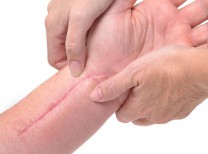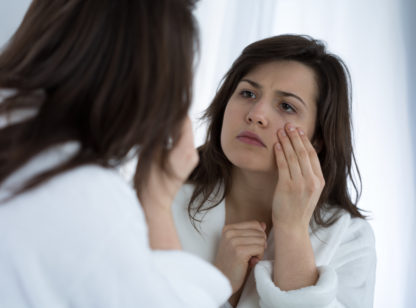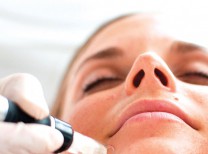With season in full bloom, many are looking for a quick facial treatment that delivers immediate rejuvenation with no down time. Dermaplaning can be the perfect choice. Widely practiced by dermatologists and plastic surgeons for more than 40 years, dermaplaning is a simple and safe treatment that leaves you with soft smooth skin and a fresh glowing face.
Dermaplaning was initially developed as an alternative to chemical exfoliations and later as a pre-treatment prep for laser resurfacing and deeper chemical peels. Today, it has become a popular aesthetic treatment performed by a licensed esthetician in a medical-spa setting.
This method of exfoliation uses a medical-grade scalpel blade that gently sloughs off the build-up of dead skin cells from the outermost layer of the skin, the stratum corneum, while also temporarily removing the vellus hair, aka “peach fuzz,” on the face. Dead skin cells and lack of exfoliation are often responsible for the skin looking dull and dry and not feeling or appearing soft and smooth. Immediately following a dermaplaning session, the skin looks brighter, healthier and rejuvenated. Makeup applied will go on more evenly and skin care products will absorb much better and work more effectively.
This dual combination of hair removal and sloughing of surface debris makes dermaplaning a winning anti-aging procedure for the ultimate glow.
Here are common questions and what you need to know before you go:
How long does a dermaplaning session take and what is the cost? If not combined with other treatments, it typically takes 20-25 minutes and can range from $85-$110.
How often should you get a dermaplaning treatment? It is recommended to get this treatment every four to six weeks.
Does the procedure hurt? Absolutely not. If done correctly by a trained professional, it should feel comfortable and relaxing for the client.
Will the hair grow back thicker or darker after the procedure? No, this will not change the look or feel of the hair. Dermaplaning is unlike shaving which only removes the hair at the skin level and does not exfoliate the skin.
Is dermaplaning only for women? Dermaplaning is a great treatment for both men and women and is most beneficial when combined with a facial. For men, it can be performed on the forehead and around the eyes; women can receive a full-face treatment.
When should someone avoid dermaplaning? This treatment should be avoided if you have active acne, rosacea, eczema or psoriasis on the skin.
What type of treatments can you combine with it? Dermaplaning can be combined with a variety of procedures including light chemical peels, hydrafacial and oxygen infusion treatments.
Marisa Rivera is a licensed esthetician and managing partner at SkinLab by Cosmetic Surgery Institute on El Paseo. She can be reached at (760) 230.5291 or for more information, visit www.skinlabcsipd.com.
















































Comments (0)